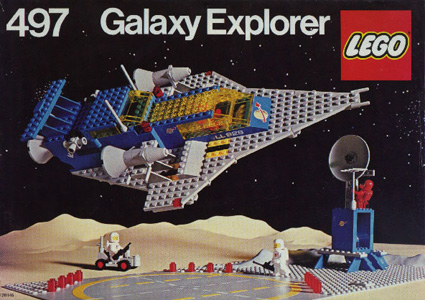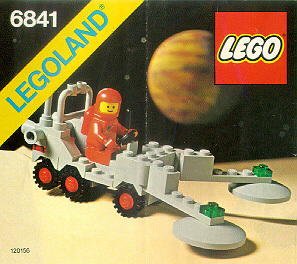Although LEGO is more popular than ever, the company seems to have lost the imaginative spirit that once made it great.
While visiting a LEGO store in a shopping mall over the Christmas holidays, I had the chance to browse the latest offerings from the world renown toy manufacturer that had played such an important part in my childhood. Enamoured with the classic set designs of the 1980s, I walked through the store with money to burn, eager to find something which could provide me with an afternoon’s entertainment during the holiday festivities. Nevertheless, with an entire store dedicated to the latest LEGO products, I couldn’t find a single item that could charm me in the same way as those classic sets from my early youth. Somehow the magic had disappeared, replaced with lacklustre design concepts that lacked depth, charm and originality. I left the store having purchased a LEGO key chain as a gift for someone else, wondering to myself, what had changed? How had this beloved privately traded toy company, having been responsible for creating thousands of hours of inspiration in my youth, been unable to produce one new product I found interesting?
Perhaps I set my standards too high; after all, the classic space LEGO sets from the 1980s are arguably among the greatest children’s toys ever produced. Their inherent innocence, harbingers of an optimistic future of smiling spacemen focused on the exploration of space and desert planets, was an unusual combination of futurism, internationalism and engineering, almost as if LEGO had stumbled upon a universal toy that might one day even entertain aliens from other worlds. The wordless instructions and simple English titles combined with the silent, desert landscapes of deep space on the box beckoned to an idealistic and utopian vision of the future where happiness and peace between humans had been achieved.
Interestingly, there were no weapons in early LEGO. The most violent piece was what looked like a double pronged laser shooter, which, nevertheless, retained a virtuous ambiguity: was it for shooting other spaceships or simply for vaporizing passing asteroids? Unlike later LEGO, these sets seemed to be focused on space exploration and resource extraction, rather than pursuing space criminals like the later, short-lived Space Police theme. Thematically, the earlier LEGO represented a more enlightened humanity where everyone was on the same team. Today there are robbers, and various other criminals, not to mention highly individualized characters based on stale creations like Jar Jar Binks.
In recent years space LEGO has been replaced by the Star Wars license. Previously happy spacemen are now unsmiling “clone troopers”, violently firing lethal weapons at their enemies. The previous special blue spaceman has been replaced with laser cannon firing “Mandolarians” (left), who far from representing an optimistic and peaceful internationalism, resemble Orwellian gestapo-like goons for the New World Order. In the bottom left-hand corner of the Star Wars sets, a figure can be seen menacingly pointing guns at the viewer. Worse, the sets themselves lack the creativity and imaginations of their earlier predecessors. Almost all the new designs are riddled with special pieces that have limited use outside of their preassigned function. One gets the impression that the designers in the 1980s only introduced new pieces after extended and lengthy debate, so few were they in number, and when they did, it was an exciting, carefully thought out addition that led to more possibilities, not less, as I’d argue is the case with many of the newer pieces.
Further the sets themselves are based on preassigned narratives from the movies they represent rather than creating a more general springboard from which children can imagine stories from -- the more detailed the scene or license, the less work is required from children’s imaginations. This lack of creative engagement is further evident on the back of the boxes, which used to show how completely different objects and scenes could be built using the same contents of the box. Today, that’s been replaced by photographs of the main set from different angles, or the picture of another set in the series. A space that was once used as an example of the potential of one’s imagination has now been replaced with cheap advertising.
It seems nearly impossible that the same leadership is in charge of both the old and new. The old designs are stylish and timeless, toys of true genius and masterpieces of design; whereas, today’s LEGO sets are hardly distinguishable from action figures, with the exception that they can be taken apart and reassembled. Sadly, this is not an exercise in nostalgia, but rather another symptom of a larger trend in the West that shows a general degeneration of innocence and creativity in cultural products, whether it be pop music, visual art, movies, cartoons, comics, or even LEGO building blocks. Ironically, many of these classic LEGO sets are available on eBay at premium prices, so I think it’s important cultural producers remind themselves: thing don’t need to be this way. Quality will sell.






